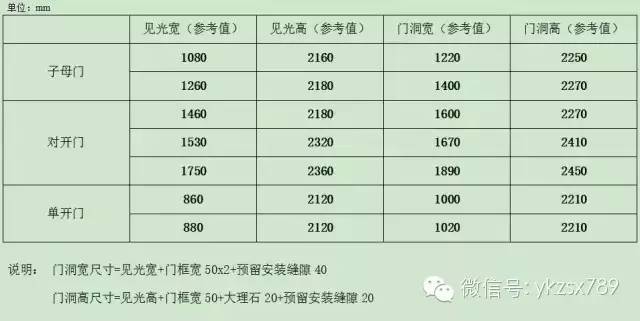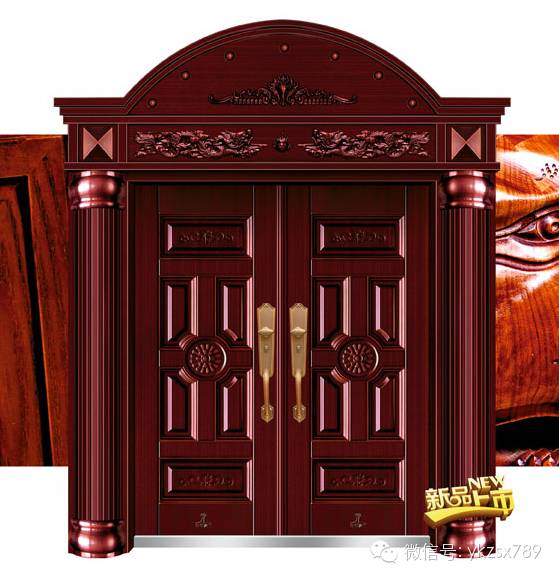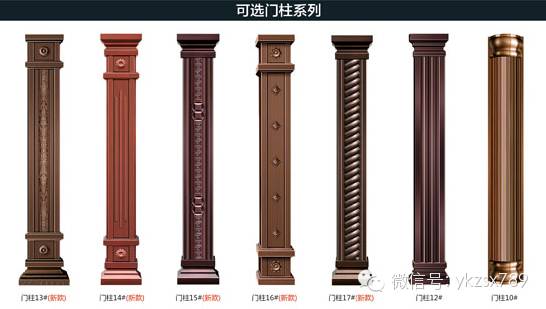1. Door size: refers to the size of the clearance of the door without the door installed, including the width of the door, the height of the door, and the thickness of the wall; the unit is generally expressed in millimeters (mm).

2. Light size: refers to the size of the door opening and light transmission, that is, the minimum size of the door frame. Choose the appropriate auspicious size according to the actual situation of Feng Shui ruler (Luban ruler).


Here I would like to say: many owners will require "full red up and down" when choosing the size of the visible light, in fact, it is not necessary.
Luban ruler was invented by Luban, it is mainly used for yin and yang house feng shui, so later generations called it "feng shui ruler". Various signs of good and bad luck are marked on the ruler with red and black fonts. Originally, it was only used by yin and yang feng shui experts to measure and build yin and yang houses. Now it has become the world's architectural experts, architects and various instruments and equipment, woodware, etc. An essential tool for production design professionals.
The upper and lower lines of the Luban ruler are measured in Luban rulers and centimeters, respectively. The upper row in the middle is dedicated to measuring Yangzhai. The relevant scales are: "wealth, disease, li, righteousness, official, robbery, harm, and origin" eight characters, each character has four items. , Each item is an omen, with words such as "Dengke, Wealth, Wealth, Good Fortune", etc. When building a house or measuring other objects in Yangzhai, take the red auspicious omen as the unit of length, which can be auspicious, and black is bad. Down in the middle, it is specially used to measure the relevant scales of yin house: "Ding, harm, prosperity, bitterness, righteousness, official, death, prosperity, loss, wealth" ten characters, each character also manages four items, and each item is listed with "wealth" Words such as virtue, discussing matters, having no heirs, disasters, and tongues, etc., avoid bad omens and measure the length when building a yin house.
Diamond Star Gate Industry recommends the size of light (feng shui size), for reference only!

3. Hanging feet: refers to the gap between the door leaf and the ground. Copper door hanging feet are generally 10mm.
4. Threshold: refers to the horizontal wooden strip, stone strip or metal strip at the lower end of the door frame. The height of the door sill is generally 30mm. Sizes can also be increased or decreased upon request. In general, we do not recommend the owner to choose a "copper threshold", considering that it is easy to "step on" the surface after long-term use, which affects the appearance.

Thresholds are very important in Feng Shui. In traditional Chinese buildings, there are thresholds at the entrances of the gates. Its function in Feng Shui is to block external unfavorable factors from entering the home and prevent talents from leaking out.

4. Door head size: refers to the size of the copper door door, including the height of the door and the width of the door. The common door head shapes on the market are roughly divided into three types: flat head, pointed head, and round head.
Since copper doors belong to high-end customized door products, there is no corresponding unified standard in the industry in terms of size. Therefore, each manufacturer has different size standards.
Suggestion: The size of the door head needs to be designed according to the size of the door opening on site.

Add one point: the size of the floating position on both sides of the door, and the normal floating size on one side is 120-200mm
5. Door column size: refers to the size of the copper door Roman column or line (door cover line). The width of the line is normally 80-120mm, and the normal size of the Roman column varies from 200-380mm. The size here can be increased or decreased according to the site conditions. Special attention: semi-cylindrical shape, the minimum width is 380mm.

What everyone should pay special attention to is: when measuring the size on site, be sure to determine whether there is a limit to the maximum size (width limit, height limit).



